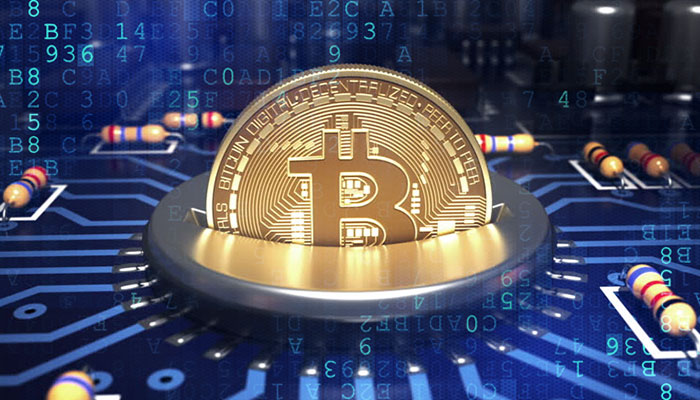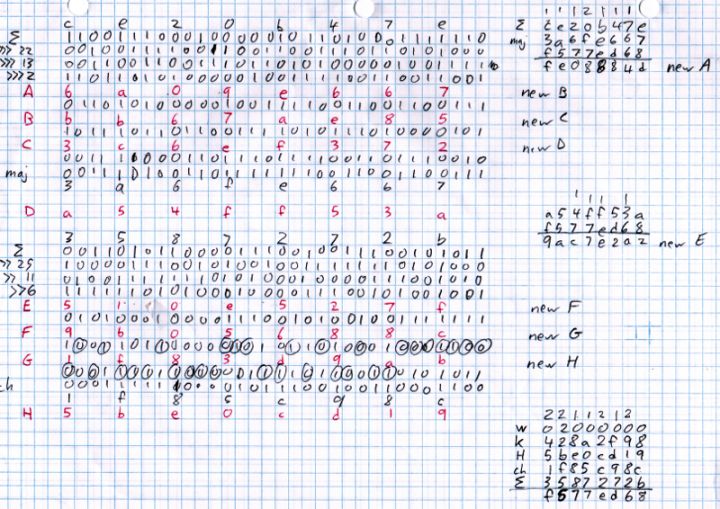About bitcoin mining, things you don’t know

According to the basic algorithm of Bitcoin, Bitcoin generates 1 block every 10 minutes, and there are N bitcoins in each block as compensation (the number of N is explained below). This block contains all the last 10 minutes. Bitcoin transaction information. The process of making bitcoin is called "mining". In the process, the computer packs the recently received bills into the newly created block. The process of packaging is a very rare chance. Was successfully manufactured. (You can understand that the newly received bills are put together, one shape can't be modified, and once the manufacturing fails, it will come again.) Once the manufacturing is successful, you broadcast the block, which means that you get N bitcoins in this block are used as compensation.
So what is N? According to the Bitcoin algorithm, in the first 4 years from the date of Bitcoin release, N = basic remuneration (50 bitcoins) + transaction remuneration (transaction fees for the entire bitcoin network in the past 10 minutes, per bitcoin) The trade will consume 0.001 bitcoin as a reward for the miners. Every 4 years, the basic reward of N will be reduced by half, that is, the first 4 years is 50, the 5-8 years is 25, the 9-12 The year is 12.5, and so on. Currently, the reward N for each block is 12.5 BTC + transaction compensation. Based on the current bitcoin price, the reward for each block is approximately equal to $130,000.
In order to succeed in mining, the miners must solve the puzzles published by the Bitcoin network. The answer may be any number from 0 to 4,294,967,296. Bitcoin mining is similar to an arms race, calculating the process as reasonably as possible, seeking maximum hashing (the amount of computation that miners can perform per second) while minimizing fixed costs such as electricity.
- What is the article describing the future cap of the DeFi world?
- 9012, why don't you buy bitcoin?
- US securities giant: Customers are very interested in Bitcoin, and may directly trade cryptocurrencies through ErisX in the future.
Next, Xiaobian will introduce four unconventional bitcoin mining methods.
1, using Apollo navigation computer
The Apollo Navigation Computer (AGC) was created in the 1960s to guide the US rocket to the moon. It successfully passed the test, but in today's fast-paced technology world, 16-bit computers are no longer competent. Even so, it does not prevent people from trying to mine bitcoin on the AGC. However, as the facts show:
"Unfortunately, the computer is too slow, and it takes a long time to successfully dig out a bitcoin."

2, use pencil and paper
This is the same person who tried to use the Apollo navigation computer to mine bitcoin. Previous attempts were made to mine bitcoin by manually solving mathematical problems. Technically, this is feasible, although Ken Shirriff concludes, “A round of algorithms takes 16 minutes and 45 seconds to achieve a hash rate of 0.67 per day.” In contrast, the Apollo navigation computer calculates it every 10.3 seconds. hope.
Ken Shirriff has stated that:
“I decided to look at the use of pencils and papers to calculate the bitcoin mining is not a viable thing. I found that the SHA-256 algorithm used in mining is actually very simple and can be calculated by hand. Of course, with hardware Mining is a long process compared to mining, but it is a good way to understand Bitcoin mining algorithms."

Some netizens have calculated the speed of the human brain and the current difficulty of mining bitcoin. It takes 395,824,185,999,360 years to manually dig a bitcoin.
3. Using nuclear reactors
No one built a nuclear reactor to exploit bitcoin. Although someone built it, they could only attack 51% of the network's computing power. When a single reactor power plant produces 5.1 TWh per year, it is about 10% of the annual consumption of the Bitcoin network.
At the same time, nuclear reactors face an unusual problem: they actually generate too much energy. In the case of nuclear power generation, factories actually need consumers to help them maintain a more uniform power output throughout the day, and mining can actually do the job. Nuclear fission is a physical process that releases energy in a nuclear reactor and cannot be suspended or stopped at will. It can only be temporarily suppressed. Nuclear power plants use this nuclear reaction in a controlled manner to boil fluids and then generate electricity through giant steam turbines. The more it does, the more efficient it is. In this case, braking on the brakes (pause/stop) does not save any fuel; instead, the energy is eventually wasted. Do you know what is always looking for excess energy? That is bitcoin.
4. Mosque
The mosque sounds like a strange place to tap bitcoin, but when the mosque receives state power subsidies, it becomes the most attractive mining site in the world.
According to Bloomberg News, Iranian Deputy Minister of Electricity Homayoun Haeri said that Iranian miners are using the state's subsidized electricity prices, and even some people are mining cryptocurrencies in mosques that use electricity free of charge.
In Iran, there is a subsidy of 5,000 riels per kilowatt of electricity, which is worth about 4 cents under Iran's unregulated market exchange rate. According to Mehr, a semi-official news agency, this means that mining a bitcoin requires a state subsidy of about 350 million rials, worth about $2,700.
Previously, Twitter user Mahsa Alimardani posted a tweet:
“The mosque receives free energy in Iran, where Iranians have established bitcoin mines. There are about 100 miners here, producing about $260,000 a year.”
The four unconventional bitcoin mining methods listed in Xiaobian may not be the most suitable mining method, but it is a basic fact that it takes electricity to dig bitcoin. The second industrial revolution (the power industry revolution) is almost 200 years old. Electricity is still the best controlled energy source on the planet, and the only energy that can be obtained through a variety of methods, whether it be chemical reactions, boiling water, water, sunlight, wind, creatures, tides, and more. Obtained in a way that is mixed. Power and Bitcoin have the same effect, can be accurately segmented and measured, can be easily converted with other similar types, can be transported over long distances, and can be stored.
Recently, the State of New York updated the “Property Collection Act” to allow the government to confiscate unclaimed bitcoins. If you have dug Bitcoin, remember to save it, although Xiaobian did not figure out how the government would collect bitcoin that the individual forgot the private key.
[This article was originally created by Youyou Finance author, please indicate the source. 】
Author: Selina
Article source: Youyou Finance
We will continue to update Blocking; if you have any questions or suggestions, please contact us!
Was this article helpful?
93 out of 132 found this helpful
Related articles
- Is the coin popular again? 21.6% of Bitcoin supply has not been moved for at least 5 years
- New York State Department of Financial Services (NYDFS) establishes research and innovation department to oversee cryptocurrency business
- Five lobbying companies + a law firm, Facebook formed a luxury group to open the way for Libra
- Ethereum 2.0 countdown: The dual-coin mechanism came out, mobile phones can also mine, revolution or nightmare? | Sheknows' deep interpretation of the etheric era
- German regulator approves $280 million in Ethereum token sales
- Blockchain policy half-year inventory: 112 policy information, 75% support
- Speed of light hits the face! US securities giant TD Ameritrade has not launched bitcoin futures trading






